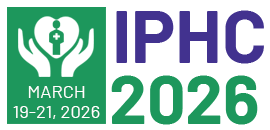Public Health Surveillance
According to the World Health Organization (WHO), public health surveillance (also known as epidemiological surveillance, clinical surveillance, or syndromic surveillance) is "the continuous, systematic collection, analysis, and interpretation of health-related data needed for the planning, implementation, and evaluation of public health practise." A timely search for effective solutions to developing health-related problems can be made possible by public health surveillance. In most cases, surveillance systems are asked to give details on when, when, and who is affected by health issues. Both passive and active public health surveillance methods are available. All healthcare establishments in a specific region are required to report illnesses and symptoms on a regular basis as part of a passive surveillance system.

Kenneth R Pelletier
University of California, United States
Gregory S Anderson
Thompson Rivers University, Canada
Yazdan Mirzanejad
University of British Columbia, Canada
Hawa Camara
National Cancer Institute, United States
Rafaela Julia Batista Veronezi
Physiotherapist, Neuroscientist & Public Health Educator, United States
Amelia Burke Garcia
NORC at the University of Chicago, United States



Title : The impact of AI on the future of public health and preventative healthcare
David John Wortley, World Lifestyle Medicine Education Services, United Kingdom
Title : Personalized and Precision Medicine (PPM) as a unique healthcare model to secure the human healthcare, wellness and biosafety through the view of public health, network-driven healthcare services and lifestyle management
Sergey Suchkov, 1N.D. Zelinskii Institute for Organic Chemistry of the Russian Academy of Sciences, Moscow, Russia, Russian Federation
Title : Psychoeducation programs to address post-traumatic stress injuries and mental health in public safety and frontline health care workers
Gregory S Anderson, Thompson Rivers University, Canada
Title : Managing integration and interoperability of intelligent and ethical transformed health and social care ecosystems
Habil Bernd Blobel, University of Regensburg, Germany
Title : Scientific evaluate quantification of social and behavioral by scalp acupuncture on children with autism spectrum disorder
Zhenhuan Liu, University of Chinese Medicine, China
Title : Environmental Public Health Impact Assessment (EHIA) process for tobacco processing plants
Vijayan Gurumurthy Iyer, Techno-Economic- Environmental Study and Check Consultancy Services, India